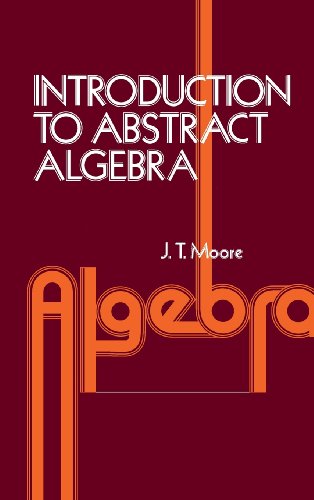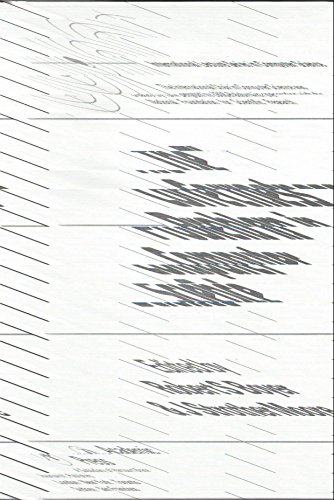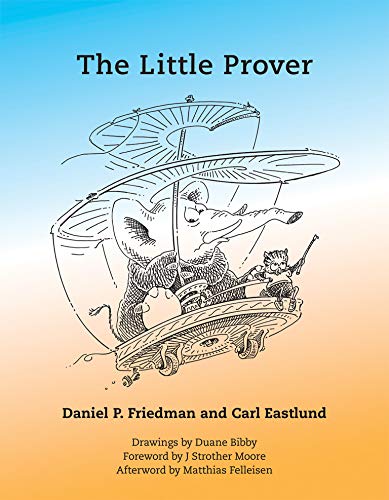moore strother (17 Ergebnisse)
Suchfilter
Produktart
- Alle Product Types
- Bücher (17)
- Magazine & Zeitschriften (Keine weiteren Ergebnisse entsprechen dieser Verfeinerung)
- Comics (Keine weiteren Ergebnisse entsprechen dieser Verfeinerung)
- Noten (Keine weiteren Ergebnisse entsprechen dieser Verfeinerung)
- Kunst, Grafik & Poster (Keine weiteren Ergebnisse entsprechen dieser Verfeinerung)
- Fotografien (Keine weiteren Ergebnisse entsprechen dieser Verfeinerung)
- Karten (Keine weiteren Ergebnisse entsprechen dieser Verfeinerung)
- Manuskripte & Papierantiquitäten (Keine weiteren Ergebnisse entsprechen dieser Verfeinerung)
Zustand Mehr dazu
- Neu (10)
- Wie Neu, Sehr Gut oder Gut Bis Sehr Gut (2)
- Gut oder Befriedigend (3)
- Ausreichend oder Schlecht (Keine weiteren Ergebnisse entsprechen dieser Verfeinerung)
- Wie beschrieben (2)
Einband
Weitere Eigenschaften
- Erstausgabe (Keine weiteren Ergebnisse entsprechen dieser Verfeinerung)
- Signiert (Keine weiteren Ergebnisse entsprechen dieser Verfeinerung)
- Schutzumschlag (Keine weiteren Ergebnisse entsprechen dieser Verfeinerung)
- Angebotsfoto (5)
Sprache (2)
Gratisversand
Land des Verkäufers
Verkäuferbewertung
-
Hardcover. Zustand: Good. No Jacket. Pages can have notes/highlighting. Spine may show signs of wear. ~ ThriftBooks: Read More, Spend Less.
-
Introduction to Abstract Algebra
Verlag: Elsevier Science & Technology, 1975
ISBN 10: 0125057504 ISBN 13: 9780125057509
Sprache: Englisch
Anbieter: Better World Books, Mishawaka, IN, USA
Zustand: Good. Former library book; may include library markings. Used book that is in clean, average condition without any missing pages.
-
Correctness Problem in Computer Science
Anbieter: Munster & Company LLC, ABAA/ILAB, Corvallis, OR, USA
Zustand: Good. Academic Press, 1983. Second Printing 1983. This Book is in Good Condition. Normal wear to covers and edges, text is clean with no marks, binding tight. Not Ex- Library. 100% Guaranteed. hardcover. Good.
-
Hardcover. Zustand: Bon. Ancien livre de bibliothèque. Traces d'usure sur la couverture. Couverture différente. Edition 1981. Ammareal reverse jusqu'à 15% du prix net de cet article à des organisations caritatives. ENGLISH DESCRIPTION Book Condition: Used, Good. Former library book. Signs of wear on the cover. Different cover. Edition 1981. Ammareal gives back up to 15% of this item's net price to charity organizations.
-
Hardcover. Zustand: Bon. Ancien livre de bibliothèque. Couverture différente. Edition 1980. Ammareal reverse jusqu'à 15% du prix net de cet article à des organisations caritatives. ENGLISH DESCRIPTION Book Condition: Used, Good. Former library book. Different cover. Edition 1980. Ammareal gives back up to 15% of this item's net price to charity organizations.
-
EUR 48,00
EUR 11,44 shipping
Ships from Vereinigtes Königreich to USAAnzahl: 2 verfügbar
In den WarenkorbPaperback. Zustand: Brand New. Bibby, Duane (illustrator). 1st edition. 229 pages. 9.25x7.00x0.50 inches. In Stock.
-
EUR 63,97
EUR 11,44 shipping
Ships from Vereinigtes Königreich to USAAnzahl: 1 verfügbar
In den WarenkorbPaperback. Zustand: Brand New. Bibby, Duane (illustrator). 1st edition. 229 pages. 9.25x7.00x0.50 inches. In Stock.
-
Piton: A Mechanically Verified Assembly-Level Language (Automated Reasoning Series)
Anbieter: Revaluation Books, Exeter, Vereinigtes Königreich
EUR 78,89
EUR 14,30 shipping
Ships from Vereinigtes Königreich to USAAnzahl: 2 verfügbar
In den WarenkorbPaperback. Zustand: Brand New. 332 pages. 9.25x6.10x0.75 inches. In Stock.
-
EUR 100,60
EUR 7,44 shipping
Ships from Vereinigtes Königreich to USAAnzahl: 1 verfügbar
In den WarenkorbZustand: New. pp. xvi + 408.
-
Taschenbuch. Zustand: Neu. Piton | A Mechanically Verified Assembly-Level Language | J Strother Moore | Taschenbuch | viii | Englisch | 2013 | Springer | EAN 9789401737913 | Verantwortliche Person für die EU: Springer Verlag GmbH, Tiergartenstr. 17, 69121 Heidelberg, juergen[dot]hartmann[at]springer[dot]com | Anbieter: preigu.
-
Piton : A Mechanically Verified Assembly-Level Language
Verlag: Springer Netherlands, Springer Netherlands, 2013
ISBN 10: 9401737916 ISBN 13: 9789401737913
Sprache: Englisch
Anbieter: AHA-BUCH GmbH, Einbeck, Deutschland
Taschenbuch. Zustand: Neu. Druck auf Anfrage Neuware - Printed after ordering - Mountaineers use pitons to protect themselves from falls. The lead climber wears a harness to which a rope is tied. As the climber ascends, the rope is paid out by a partner on the ground. As described thus far, the climber receives no protection from the rope or the partner. However, the climber generally carries several spike-like pitons and stops when possible to drive one into a small crack or crevice in the rock face. After climbing just above the piton, the climber clips the rope to the piton, using slings and carabiners. A subsequent fall would result in the climber hanging from the piton-if the piton stays in the rock, the slings and carabiners do not fail, the rope does not break, the partner is holding the rope taut and secure, and the climber had not climbed too high above the piton before falling. The climber's safety clearly depends on all of the components of the system. But the piton is distinguished because it connects the natural to the artificial. In 1987 I designed an assembly-level language for Warren Hunt's FM8501 verified microprocessor. I wanted the language to be conveniently used as the object code produced by verified compilers. Thus, I envisioned the language as the first software link in a trusted chain from verified hardware to verified applications programs. Thinking of the hardware as the 'rock' I named the language 'Piton.
-
EUR 174,86
EUR 14,30 shipping
Ships from Vereinigtes Königreich to USAAnzahl: 1 verfügbar
In den WarenkorbPaperback. Zustand: Brand New. 1st edition. 291 pages. 9.50x6.50x0.69 inches. In Stock.
-
Taschenbuch. Zustand: Neu. Computer-Aided Reasoning | ACL2 Case Studies | Matt Kaufmann (u. a.) | Taschenbuch | xv | Englisch | 2010 | Springer US | EAN 9781441949813 | Verantwortliche Person für die EU: Springer Verlag GmbH, Tiergartenstr. 17, 69121 Heidelberg, juergen[dot]hartmann[at]springer[dot]com | Anbieter: preigu.
-
Taschenbuch. Zustand: Neu. Druck auf Anfrage Neuware - Printed after ordering - Computer-Aided Reasoning: ACL2 Case Studies illustrates how the computer-aided reasoning system ACL2 can be used in productive and innovative ways to design, build, and maintain hardware and software systems. Included here are technical papers written by twenty-one contributors that report on self-contained case studies, some of which are sanitized industrial projects. The papers deal with a wide variety of ideas, including floating-point arithmetic, microprocessor simulation, model checking, symbolic trajectory evaluation, compilation, proof checking, real analysis, and several others. Computer-Aided Reasoning: ACL2 Case Studies is meant for two audiences: those looking for innovative ways to design, build, and maintain hardware and software systems faster and more reliably, and those wishing to learn how to do this. The former audience includes project managers and students in survey-oriented courses. The latter audience includes students and professionals pursuing rigorous approaches to hardware and software engineering or formal methods. Computer-Aided Reasoning: ACL2 Case Studies can be used in graduate and upper-division undergraduate courses on Software Engineering, Formal Methods, Hardware Design, Theory of Computation, Artificial Intelligence, and Automated Reasoning. The book is divided into two parts. Part I begins with a discussion of the effort involved in using ACL2. It also contains a brief introduction to the ACL2 logic and its mechanization, which is intended to give the reader sufficient background to read the case studies. A more thorough, textbook introduction to ACL2 may be found in the companion book, Computer-Aided Reasoning: An Approach. The heart of the book is Part II, where the case studies are presented. The case studies contain exercises whose solutions are on the Web. In addition, the complete ACL2 scripts necessary to formalize the models and prove all the properties discussed are on the Web. For example, when we say that one of the case studies formalizes a floating-point multiplier and proves it correct, we mean that not only can you read an English description of the model and how it was proved correct, but you can obtain the entire formal content of the project and replay the proofs, if you wish, with your copy of ACL2. ACL2 may be obtained from its home page. The results reported in each case study, as ACL2 input scripts, as well as exercise solutions for both books, are available from this page.
-
Buch. Zustand: Neu. Druck auf Anfrage Neuware - Printed after ordering - Computer-Aided Reasoning: ACL2 Case Studies illustrates how the computer-aided reasoning system ACL2 can be used in productive and innovative ways to design, build, and maintain hardware and software systems. Included here are technical papers written by twenty-one contributors that report on self-contained case studies, some of which are sanitized industrial projects. The papers deal with a wide variety of ideas, including floating-point arithmetic, microprocessor simulation, model checking, symbolic trajectory evaluation, compilation, proof checking, real analysis, and several others. Computer-Aided Reasoning: ACL2 Case Studies is meant for two audiences: those looking for innovative ways to design, build, and maintain hardware and software systems faster and more reliably, and those wishing to learn how to do this. The former audience includes project managers and students in survey-oriented courses. The latter audience includes students and professionals pursuing rigorous approaches to hardware and software engineering or formal methods. Computer-Aided Reasoning: ACL2 Case Studies can be used in graduate and upper-division undergraduate courses on Software Engineering, Formal Methods, Hardware Design, Theory of Computation, Artificial Intelligence, and Automated Reasoning. The book is divided into two parts. Part I begins with a discussion of the effort involved in using ACL2. It also contains a brief introduction to the ACL2 logic and its mechanization, which is intended to give the reader sufficient background to read the case studies. A more thorough, textbook introduction to ACL2 may be found in the companion book, Computer-Aided Reasoning: An Approach. The heart of the book is Part II, where the case studies are presented. The case studies contain exercises whose solutions are on the Web. In addition, the complete ACL2 scripts necessary to formalize the models and prove all the properties discussed are on the Web. For example, when we say that one of the case studies formalizes a floating-point multiplier and proves it correct, we mean that not only can you read an English description of the model and how it was proved correct, but you can obtain the entire formal content of the project and replay the proofs, if you wish, with your copy of ACL2. ACL2 may be obtained from its home page. The results reported in each case study, as ACL2 input scripts, as well as exercise solutions for both books, are available from this page.
-
.- London - New York - Toronto - Sydney - San Francisco. 1981. Academic Press . 4º menor. XIII- 279 pgs. Cartoné editorial. Muy buen estado. . . ISBN 10: 0121229203. Informática.
-
.- New York - London - Toronto - Sydney - San Francisco. 1979. Academic Press . 4º menor. XIX- 397 pgs- 1 h. Cartoné editorial. Muy buen estado. . . ISBN 10: 0121229505. Informática.














